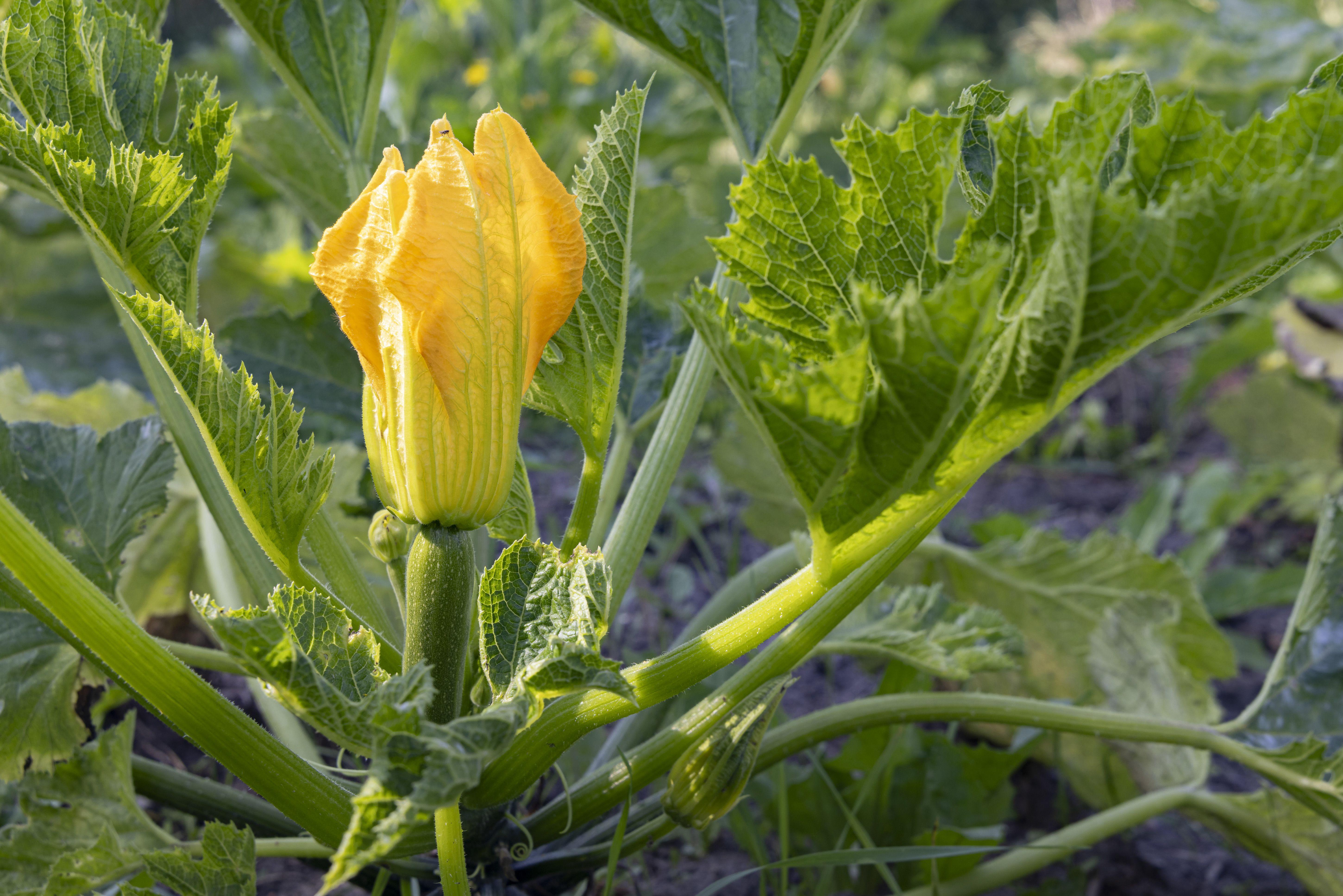Zucchini plants are so prolific that August 8th has been declared National Sneak Zucchini onto Your Neighbor's Porch Day. Though zucchini is one the easiest and most rewarding crops to grow, knowing how and when to harvest zucchini helps you get tastier and more impressive yields from your plants.
Whether you’re growing standard or round zucchini, or you want to harvest zucchini blossoms for cooking or fresh eating, here’s everything you need to know about harvesting zucchini and their flowers.
Save your favorite Better Homes & Gardens recipes in one place using MyRecipes. Just click the save icon (with a heart!).
Identifying Male vs. Female Zucchini Flowers
Zucchini and summer squash are monoecious plants, which means that a single plant produces both male and female flowers. Knowing how to tell the difference between these two types of blooms is important because you don't want to accidentally reduce zucchini yields by harvesting too many female flowers.
Male zucchini flowers typically appear a little earlier than female flowers and have thinner, hairier stems. Female zucchini flowers, on the other hand, bloom a little later, and their stems are plumper, less hairy, and are shaped a bit like mini zucchini. Both types of flowers are edible and have bright yellow petals; however, only female blossoms produce fruit.
Although the female flowers are considered to be slightly tastier, harvesting too many female blossoms reduces fruiting in zucchini. That’s why it’s best to harvest mostly male flowers and leave most of the female flowers untouched. For optimal pollination and zucchini yields, leave about 1 to 2 male zucchini flowers for every 10 to 12 female blossoms that you see on your plants.
Related
Harvesting Zucchini Flowers
If you grow zucchini from seed, you can expect your plants to start flowering about 45 to 55 days after sowing. For the first week or two, zucchini plants will typically only produce male flowers. But more female blooms will appear as the season progresses.
Once zucchini plants start to flower, harvest the blossoms early and regularly for cooking. The flowers are much more pleasant to eat (and easier to stuff) if you pick them while they’re fresh, unwrinkled, and still open. Male flowers typically fall off the plant within a day of opening, while female flowers close up once they’ve been pollinated.
If possible, harvest zucchini blossoms in the early morning when the flowers are open and the morning dew has just dried. Clip the flowers off the plant with clean, sterilized pruning shears or scissors and leave about ½ inch of stem attached to each bloom.
After harvesting, handle the fragile blossoms with care. Place them in single layers in a tray or basket, and bring them indoors as soon as possible; in the sun, they wilt fast.
Zucchini flowers close up after harvesting, which makes it harder to remove the stamen and pistil inside. If you want to remove these inner flower parts, do so immediately after harvesting.
Harvesting Zucchini
Zucchini plants usually begin to fruit within a week or two after the first flowers appear, or roughly 50 to 60 days after sowing. Ripe zucchini are oblong, round, green, or yellow, depending on the variety. Regardless of what your zucchinis look like, for the best flavor and texture, it is essential to harvest the fruit early and often.
While it may be tempting to pull zucchini off the vine, this easily damages zucchini plants and reduces fruiting. Instead, use a sharp knife or pruners to cut the zucchinis from the plant. Leave about 1 inch of stem attached to each fruit so it stays fresh. Unlike zucchini flowers, zucchini can be harvested at any time of the day, but it’s still important to handle them gently to avoid damaging their delicate skins.
Once your plants start fruiting, check them regularly for ripe zucchinis and be sure to look under the large leaves for hidden fruit. For peak flavor and texture, it’s best to pick zucchinis when they’re 4 to 8 inches long, or about the size of a billiard ball for round varieties.
Zucchini quickly lose their flavor and develop tough skins and an unpleasant stringy, spongy, or mushy texture if left on the plant too long.
Storing Fresh Zucchini and Flowers
Although zucchini flowers are at their peak right after harvesting, they can be stored on a paper towel-lined plate or tray in the fridge for a day or two if needed. Eat the flowers raw or cooked, but it’s recommended to soak them in water first and then pat them dry with a paper towel to ensure they don’t harbor bugs. Then, trim the stems off just below the flowers. Remove the stamens and pistils inside the flowers to get rid of any potential bitterness and create more room for stuffing.
Compared to zucchini flowers, fresh zucchini lasts longer in the fridge; it usually retains its flavor and texture for about 1 to 2 weeks after harvesting. For longer storage, zucchini and their flowers can be frozen or dehydrated, though frozen flowers turn mushy after thawing. For the best results, blanch zucchini before freezing (cut, sliced, diced, or grated) in airtight, freezer-proof containers.



